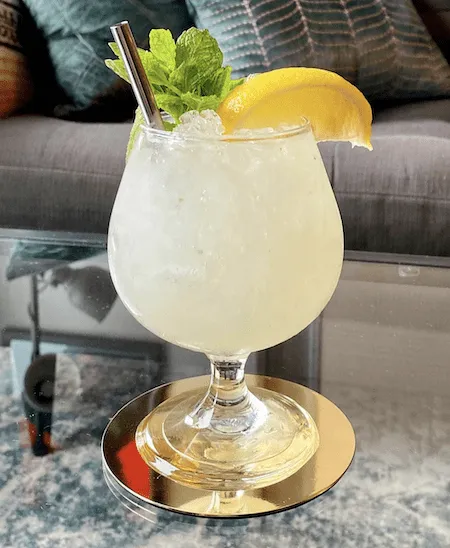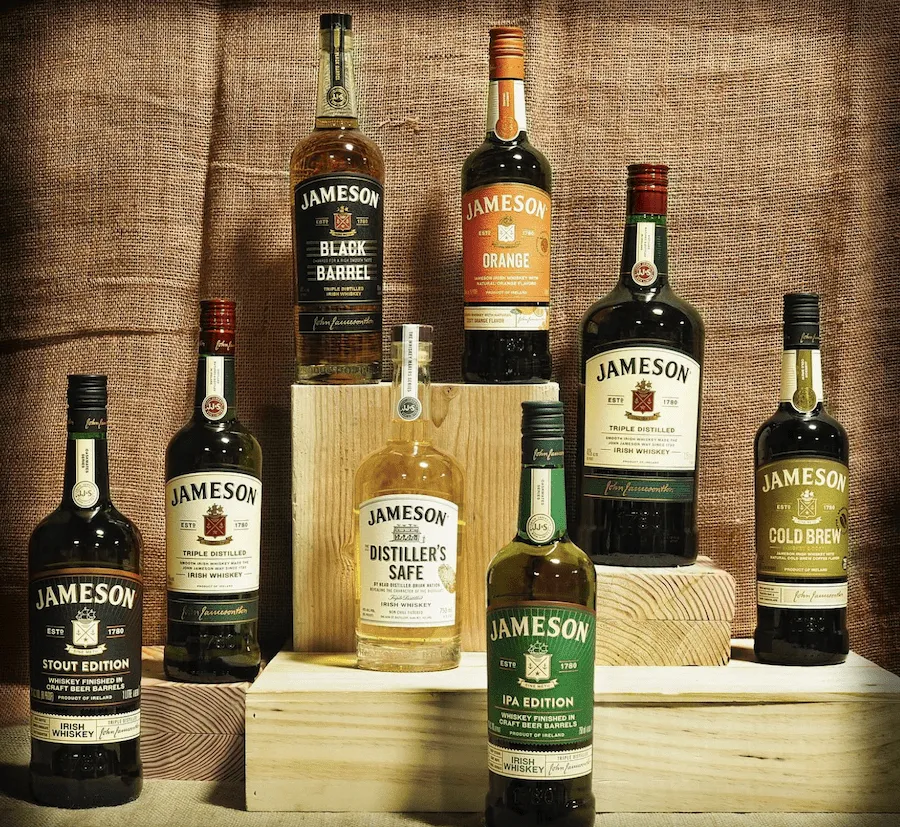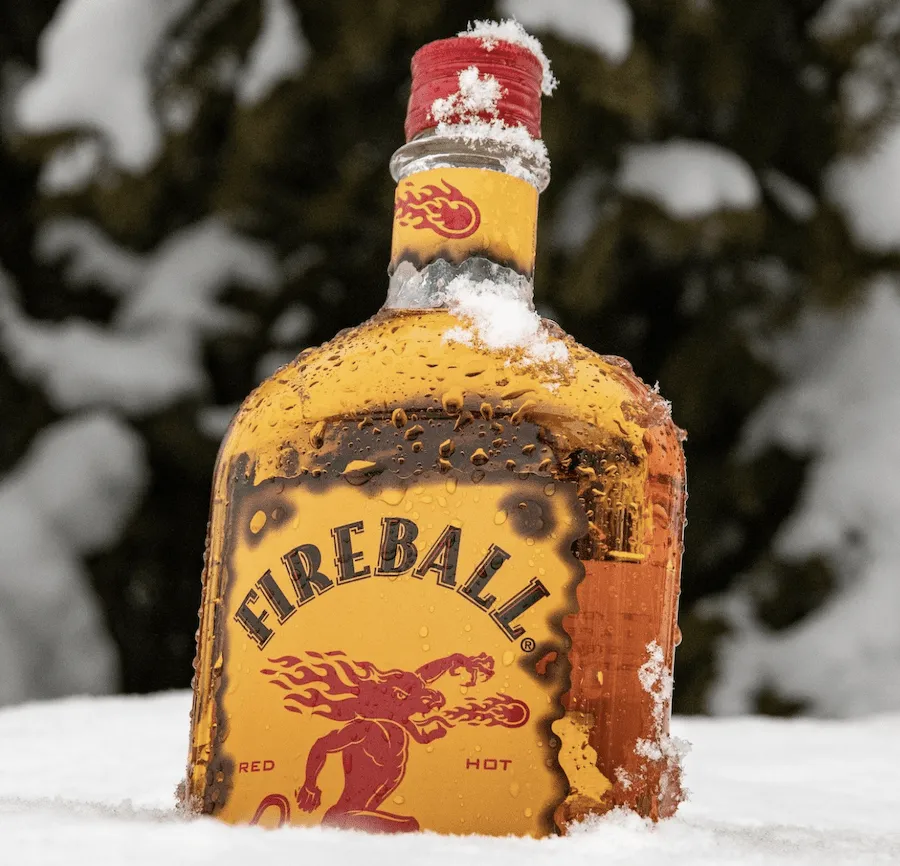Absinthe is a spirit that has been mired in myth, rumor, and falsehoods for much of its existence, especially in the United States. Sometimes known as Green Fairy, absinthe is a potent blend of alcohol, wormwood, and other flavors. It generally has a pronounced anise flavor to it, and comes in multiple grades, styles, and regional sub-styles. It can be consumed on its own, but in the modern day, it is also commonly used as a cocktail ingredient.
Absinthe Brands and its Prices

While there are now countless absinthe brands on the market, these are some of the notable ones to look out for.
La Fee: La Fee was the first absinthe legally produced in France after the repeal of absinthe prohibition. It is made in south-eastern France and bottled at 68% ABV.
Lucid: Lucid was the first absinthe brand to be imported into the USA following the repeal of absinthe prohibition. Developed by absinthe experts and historians (some of the same people behind Jade 1901), it is bottled at 62% ABV.
St. George Absinthe Verte: The first absinthe to be produced on US soil after the repeal of absinthe prohibition, St. George Verte soon inspired a number of smaller distilleries to make their own absinthe.
Kubler: Originating in 1863, Kubler is a Swiss “le Bleue” or Blanche style absinthe. It is bottled at 53% ABV and highly recommended.
Tempus Fugit Vieux Pontarlier: Produced in Pontarlier, France, this absinthe was widely popularized by craft cocktail bartenders. It’s bottled at 65% ABV.
Pernod: Now the world’s second-largest spirits seller, Pernod produces absinthe as well as pastis, a similar spirit which lacks the wormwood component.
Jade 1901: Jade is on the higher end of the spectrum for absinthe suitable for mixing in cocktails and the lower end of the ultra-premium absinthe market. Designed based on chemical analysis of pre-ban absinthe from 1901, Jade also released three other historically accurate absinthes, as well as eau de vie and bitters. Bottled at 68%
How to Drink Absinthe
The traditional way to drink absinthe involves mixing it with sugar and water in a ritual that uses a slotted spoon to hold a sugar cube above a glass of absinthe. Water is dripped or poured over the sugar cube, dissolving it into the absinthe while also diluting the drink. The addition of water causes the oils in the absinthe to be released from suspension and the absinthe begins to turn cloudy, or “louche”. This effect is desirable, as complex flavors and aromas become more pronounced in the louched absinthe.
Absinthe is also commonly used in small amounts in cocktails, one of which being the famous Sazerac. It has also become more common to see it used as the base spirit in a cocktail rather than as a modifier.
Categories
Absinthe can be divided into two broad categories: distilled absinthe and mixed absinthe. Distilled absinthe is made via distillation. Anise, wormwood, and other herbs are macerated in distilled spirit and then redistilled with that spirit to create absinthe. The absinthe can then undergo a second round of herb maceration in some styles.
Cold-mixed absinthe is a cheaper and generally inferior style of making absinthe, where spirit is simply mixed with herbal extracts to create an anise- and wormwood-flavored spirit. This method requires no distillation.
Grades
Absinthe was also sometimes classified by grade, with the grades being ordinare, demi-fine, fine, and suisse. As absinthe increased in grade, it also increased in quality and strength. This system is not commonly used in the modern day, and there are no legal standards on which it is based.
Styles
The two main styles of absinthe are Blanche and Verte.
Blanche: A white absinthe, bottled after distillation and dilution without a second maceration phase. They are usually lower in ABV than their green counterparts. This style is sometimes called “la bleue” in Switzerland and became popular there during the period when absinthe was illegal, as it was easier to disguise as a legal substance due to its lack of color.
Verte- Verte, or green absinthe, begins as a blanche absinthe, but after distillation, it undergoes a second maceration, where herbs are soaked in the absinthe to extract their essential oils. The oils typically need a lower water content to remain stable, so this style is usually higher proof than blanche absinthe. The second maceration creates a more intense flavor. This style of absinthe was traditionally the most popular and widely produced.
Absenta is a lesser known style compared to its cousins blanche and verte. It is a style of absinthe made in Spain, stemming from the period of time when Spain remained one of the few European nations to allow absinthe production. It is made using a different type of anise and sometimes contains citrus in the macerations.
Hausegemacht: A homemade absinthe that became popular during the time period when absinthe was illegal. It remains popular today, as the producers seek to avoid high taxes on alcohol. There is also a certain allure to an illegal operation that attracts business.
Bohemian: This style is also known as “Czech style absinthe” or as absinth. It is very different from traditional French or Swiss absinthe and really would not be considered absinthe if the category had any sort of internationally imposed regulations. It is a wormwood-infused high-proof spirit, but does not have any anise or fennel flavors to it and does not louche.
History of Absinthe
Like many spirits, the origins of absinthe are murky at best. The Ancient Greeks and Egyptians used wormwood in their traditional medicine as well as to flavor wines. These early wormwood-flavored beverages are a sort of precursor to absinthe. The modern origins of the spirit trace back to the late 18th century, where, like many spirits, there is a debate over the originator. One claim is that absinthe began as a remedy for all ailments, developed by a French doctor named Pierre Ordinare. Pierre was living in Couvet, Switzerland at the time, and some claim he sold his recipe to a group of sisters in the town named Henriod. The Henriod sisters then went on to sell absinthe as a medical elixir. Some claim that the Henriod sisters created the original recipe and simply bought out Pierre to limit their competition. The Henriod sisters sold their recipe to a French man named Major Dubied. Dubied went on to establish the first official absinthe distillery in 1797, located in Couvet. He brought his own son, as well as his son-in-law, into the business, and in 1805, they established a second distillery in Pontarlier, France. His son-in-law was named Henry Louis Pernod, and he went on to become one of the most famous names in the alcoholic spirits world.
Throughout the 1800’s, the popularity of absinthe continued to grow. As with gin and rum, war became one of the major driving factors in the growth of absinthe as an industry. Soldiers in the French army were given absinthe during the Franco-Algerian war as an antimalarial and developed an affinity for it, creating a domestic demand for the product when they returned home from battle. The rise of absinthe coincided with the decimation of the European wine industry due to phylloxera, giving it another boost in popularity as folks sought out an alcoholic beverage to replace wine. It soon became popular in bars, cafes, and nightclubs throughout France, and a colloquial nickname for 5 pm became “the green hour” in reference to its consumption. It was exported all over Europe, notably to Germany, the UK, and the Czech Republic. It also made its way to New Orleans, where the first absinthe cocktail, the Sazerac, was invented. The 1880’s saw a boom in production, leading to a massive price drop and making it one of the most consumed liquors in France at the time.
Bans
In the early 1900’s, nations around the world began banning the production and consumption of absinthe. The main driving factor behind these bans was the temperance movement. As with more modern drug prohibition campaigns, heinous rumors were spread regarding the effects of absinthe consumption, claiming that it would turn you into a raving violent lunatic, destroying the fabric of society. Artists created famous pieces depicting absinthe drinkers as depressed addicts, which functioned as propaganda for the movement. The push to ban absinthe was successful, and in the late 1800’s and early 1900’s, absinthe was banned in Switzerland, France, the USA, Belgium, Brazil, the Congo, and the Netherlands. While the UK never formally banned absinthe, consumption dropped to almost nothing as its neighbors no longer produced absinthe for export.
As with prohibition of other liquors and narcotics, the bans did little to stop the production of absinthe, but instead shifted its production underground. People all over Europe began making their own homemade absinthe, which gave rise to a new style of absinthe in Germany. In the USA, New Orleans switched to Herbsaint, an anise-flavored absinthe substitute that is still incredibly popular today. The ban on absinthe also popularized Pastis in France, a similar anise liquor made without wormwood. Due to the fact that absinthe was never banned in Spain, many French operations relocated there and continued absinthe production on a smaller scale, with sales dwindling until the 1960’s when production was shut down.
Modern Revival
In countries where absinthe was never banned, such as the Czech Republic, Portugal, and Spain, absinthe production continued on a small scale. Czech Style absinthe, which does not include anise or fennel, became the dominant style and in the 1990’s importers brought it into the UK market, which had never formally banned absinthe. Many regarded this new absinthe to be a cheap imitation of the original style. However, in the late 90’s and early 2000’s, many nations began to lift their almost century old bans on absinthe, and production of genuine absinthe began again across Europe, and even in markets which had not traditionally been absinthe producers. While most nations do not have any strict laws surrounding the production of absinthe in the manner that cognac or scotch do, there are EU regulations prohibiting thujone levels from exceeding 35mg per kg of absinthe. This level actually exceeds the amount of thujone that traditional pre-ban absinthe would have contained. Switzerland is the only nation to have specific rules surrounding the production of absinthe unrelated to thujone content. In order for an absinthe produced in Switzerland to be labeled and sold as such, it must be distilled, must not contain certain additives, and must contain only natural coloring, or no added coloring.
Myths Surrounding Absinthe
Due to the efforts of the temperance movement as well as decades of obscurity, Absinthe has been steeped in false rumors and myths, especially in the American understanding of the spirit.
Hallucinations
One such myth is that Absinthe causes hallucinations. This is false. Absinthe does not contain any psychoactive chemicals that would be able to cause hallucinations. No peer-reviewed study has ever established hallucinogenic properties in absinthe, and this rumor is primarily based on a discredited study on wormwood oils conducted by a French psychiatrist. The few genuine reports of hallucinations due to absinthe are attributed to chemical adulterants added to low-quality or fake absinthe to imitate its color or flavor. Many absinthe-drinking writers and artists embraced these myths as a bit of absurdity, but the comedic nature of their works was misunderstood by the temperance movement, and their art was mispurposed as anti-absinthe propaganda.
Thujone and Similarity to Marijuana
Another myth surrounding absinthe is that it has a similar effect to marijuana. This myth began circulating in the 1970’s when a scientific paper suggested that Thujone, a chemical present in absinthe, was similar to THC. This was disproven in the 1990’s. Myths surrounding the presence of Thujone in Absinthe have persisted, with the concert that Thujone can cause seizures or loss of attention span. In fact, Thujone is present in absinthe in such low levels that a human would need to consume a near lethal amount of absinthe before any detectable effects of Thujone could be felt.
Absinthe Cocktails
Absinthe Frappe
2 oz Absinthe Verte
½ oz simple syrup
8 mint leaves
¼ oz lemon juice
1 swath of lemon peel
Express a swath of lemon peel into your shaker and add it along with all the other ingredients to your shaker. Shake briefly. Dump it into your glass and top it off with 1 oz of soda water and crushed ice. Garnish with a sprig of mint.

Absinthe Colada
1 oz Absinthe Verte
1 oz Overproof Jamaican Rum
1 oz coconut cream
2 oz pineapple juice
Teaspoon demerara syrup
½ oz lime juice
Shake everything with a single ice cube until the cube is melted. Pour into a cocktail mug and top with crushed ice. Garnish with a sprig of mint, a silly drink umbrella, and a lime wheel.









